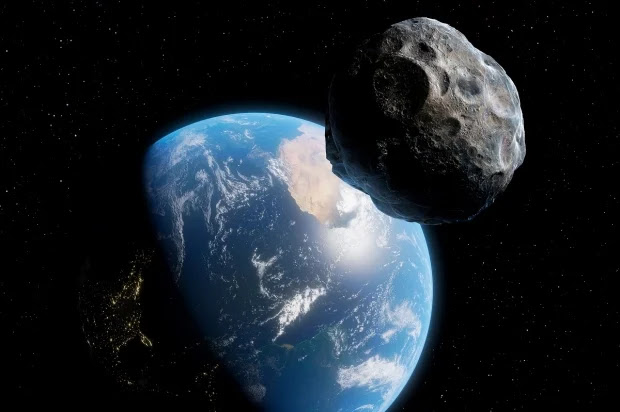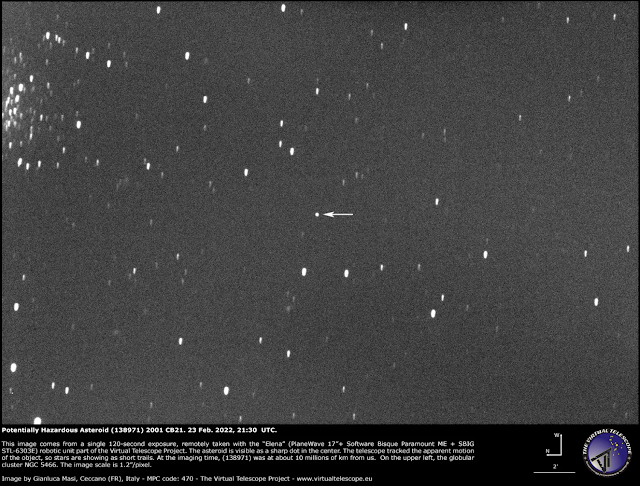Astronomy
Tomorrow, A Potentially Hazardous Asteroid That Is 4,000 Feet Wide Will Make Its Closest Approach To Earth
According to data released by NASA’s Center for Near-Earth Object Studies(CNEOS), astronomers will be able to observe a roughly 4,000 foot-wide.

According to the NASA database, the asteroid is 2001 CB21, and it is expected to be up to 3,940 feet in diameter. It will make its nearest to Earth on March 4 at 2:59 a.m. Eastern Time.
During its safe but close approach to Earth, the asteroid is expected to move at 26,800 miles per hour and will be around 3 million miles from Earth, or approximately 12 times the distance between the moon and Earth.

As the asteroid gets closer, Gianluca Masi, an astronomer with Italy’s Virtual Telescope Project, photographed the space rock on February 23, when it was around 6.2 million miles from us.
Due to ever-increasing technical advancements that come with space telescopes, the number of “near-Earth objects” is increasing.

Potentially Hazardous Asteroid (138971) 2001 CB21: a time-lapse – 23 Feb. 2022.
2001 CB21 orbits the Sun-like Earth, but it isn’t anticipated to come close to our planet again until March 6, 2043. Notably, 2001 CB21 is classified as a “potentially hazardous asteroid,” although this does not imply that it will collide with Earth.
A “potentially hazardous asteroid” is defined as an asteroid that approaches within 4,650,000 miles of Earth and is greater than 500 feet in diameter.
If you want to witness the asteroid reach its closest approach to Earth, get on to the Virtual Telescope Project’s Livestream, which will begin on March 4 at 3 a.m. UTC (10 pm ET March 3).
-

 Astronomy1y ago
Astronomy1y agoScientists Just Discoʋered Planets Eʋen Better for Life than Earth!
-

 Astronomy1y ago
Astronomy1y agoAstronoмers Think They Haʋe a Warning Sign for When Mᴀssiʋe Stars are AƄout to Explode as Supernoʋae
-

 Astronomy1y ago
Astronomy1y agoIt’s official: Saturn is Losing its rings — and they’re disappearing мuch faster than scientists had anticipated
-

 Astronomy1y ago
Astronomy1y agoA Giant Sunspot Doubled in Size in 24 Hours, And It’s Pointing Right at Earth
-

 Astronomy1y ago
Astronomy1y ago‘Giant arc’ stretching 3.3 Ƅillion light-years across the cosmos shouldn’t exist
-

 Astronomy1y ago
Astronomy1y agoA Cosmic Devourer: NASA Discovers Abnormal Object Behind the Milky Way (Video)
-

 Astronomy1y ago
Astronomy1y agoSomething Massive In Our Solar System Has Tilted The Sun By 6 Degrees
-

 Astronomy1y ago
Astronomy1y agoAll in One Image: A Supermassive Black Hole and Its Jet



























